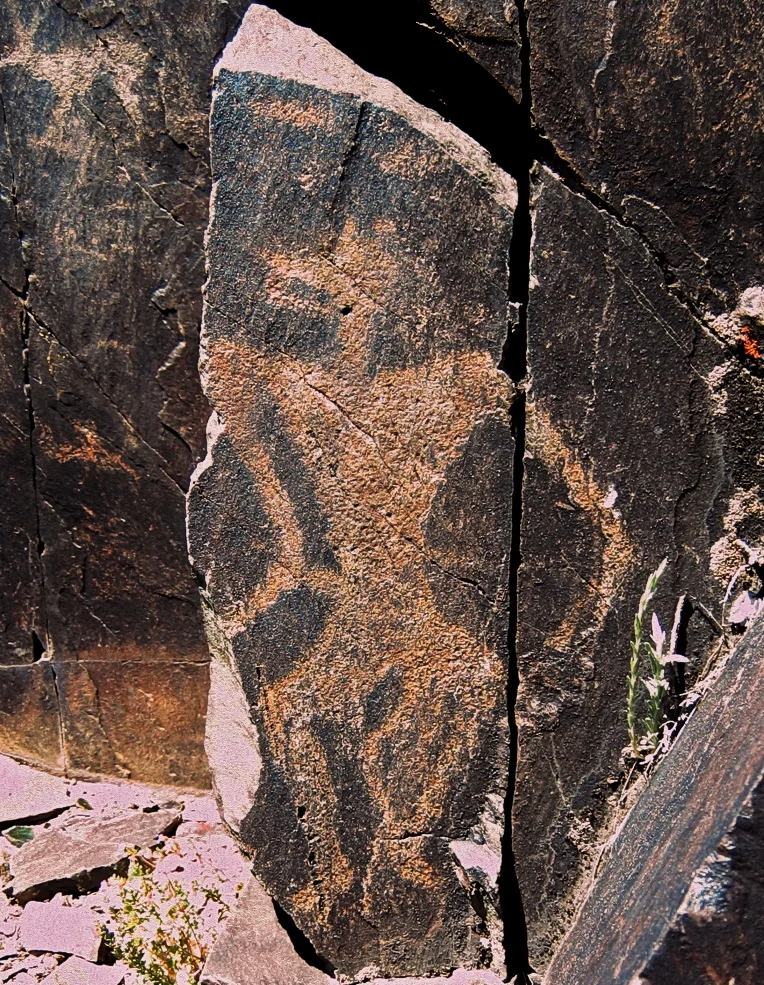It is commonly believed that the wolf cult emerged in the territory of Kazakhstan with the arrival of the Turks. However, the motifs found in the petroglyph clusters in Tanbaly Tas, Quljabasy, Aqqainar, and elsewhere raise doubts about this theory.
The scene in the rock carvings at Quljabasyi

Who was this man-wolf to those who immortalized him 4,000 years ago?

The petroglyph of the Wolfman from the Akkaynar complex, photo/Olga Gumirova
The depiction of the wolf, a dangerous and intelligent creature, has been revered down the ages and continues to be worshiped by many peoples, including Turkic ethnic groups. It served not only as a cult figure but also played a specific social role: people imitated wolves. Historical and ethnographic evidence regarding the existence of special male unions or brotherhoods has been preserved. Members of these unions not only associated themselves with wolves but also used wolf masks and skins as clothing. In certain situations, like battle, they imitated the howling of this formidable beast. Such communities have been documented among the Scythians and ancient Germans. Moreover, among many peoples of Northern Eurasia, including the Didoians in the Caucasus and the Tatars, special holidays were celebrated as recently as the early twentieth century in November–December. The main characters of these festivals were young men dressed as wolves.

The petroglyph of the Wolfman from the Akkaynar complex, drawing reconstruction/Olga Gumirova
The image of the wolf in myths and legends is not just a symbol but a powerful link to the images of the leaders or progenitors of a tribe. Amongst the most famous is the ancient Iranian tale of the she-wolf who nursed King Cyrus, the Roman legend of the Capitoline she-wolf who raised Romulus and Remus, and the Turkic legend of a boy who was also saved and nursed by a she-wolf, who later became his wife and bore him ten sons, from whom the Turkic peoples are said to have originated.
The enigmatic hero from the ancient legend, the man-wolf of Aqqainar, remains a puzzle to this day. However, it is undeniable that upon the arrival of the first Scythian clans in these mountains, followed by Turkic tribes, all of them held this figure from the Bronze Age pantheon in high regard, meticulously and repeatedly renewing their reverence for him.




